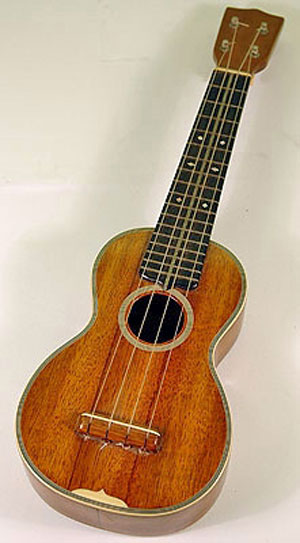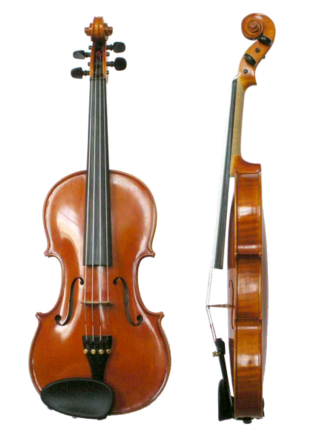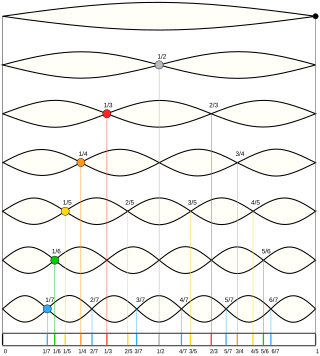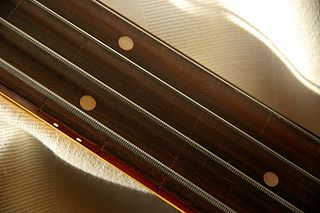The banjo is a stringed instrument with a thin membrane stretched over a frame or cavity to form a resonator. The membrane is typically circular, in modern forms usually made of plastic, originally of animal skin. Early forms of the instrument were fashioned by African Americans and had African antecedents. In the 19th century, interest in the instrument was spread across the United States and United Kingdom by traveling shows of the 19th-century minstrel show fad, followed by mass-production and mail-order sales, including instruction method books. The inexpensive or home-made banjo remained part of rural folk culture, but 5-string and 4-string banjos also became popular for home parlor music entertainment, college music clubs, and early 20th century jazz bands. By the early 21st century, the banjo was most frequently associated with folk, bluegrass and country music, but was also used in some rock, pop and even hip-hop music. Among rock bands, the Eagles, Led Zeppelin, and the Grateful Dead have used the five-string banjo in some of their songs. Some famous pickers of the banjo are Ralph Stanley and Earl Scruggs.

The double bass, also known as the upright bass, the acoustic bass, or simply the bass, is the largest and lowest-pitched chordophone in the modern symphony orchestra. Similar in structure to the cello, it has four or five strings.

An electric guitar is a guitar that requires external amplification in order to be heard at typical performance volumes, unlike a standard acoustic guitar. It uses one or more pickups to convert the vibration of its strings into electrical signals, which ultimately are reproduced as sound by loudspeakers. The sound is sometimes shaped or electronically altered to achieve different timbres or tonal qualities from that of an acoustic guitar via amplifier settings or knobs on the guitar. Often, this is done through the use of effects such as reverb, distortion and "overdrive"; the latter is considered to be a key element of electric blues guitar music and jazz, rock and heavy-metal guitar-playing. Designs also exist combining attributes of the electric and acoustic guitars: the semi-acoustic and acoustic-electric guitars.

The guitar is a stringed musical instrument that is usually fretted and typically has six or twelve strings. It is usually held flat against the player's body and played by strumming or plucking the strings with the dominant hand, while simultaneously pressing selected strings against frets with the fingers of the opposite hand. A guitar pick may also be used to strike the strings. The sound of the guitar is projected either acoustically, by means of a resonant hollow chamber on the guitar, or amplified by an electronic pickup and an amplifier.

A mandolin is a stringed musical instrument in the lute family and is generally plucked with a pick. It most commonly has four courses of doubled strings tuned in unison, thus giving a total of eight strings. A variety of string types are used, with steel strings being the most common and usually the least expensive. The courses are typically tuned in an interval of perfect fifths, with the same tuning as a violin. Also, like the violin, it is the soprano member of a family that includes the mandola, octave mandolin, mandocello and mandobass.

A musical ensemble, also known as a music group or musical group, is a group of people who perform instrumental and/or vocal music, with the ensemble typically known by a distinct name. Some music ensembles consist solely of instrumentalists, such as the jazz quartet or the orchestra. Other music ensembles consist solely of singers, such as choirs and doo-wop groups. In both popular music and classical music, there are ensembles in which both instrumentalists and singers perform, such as the rock band or the Baroque chamber group for basso continuo and one or more singers. In classical music, trios or quartets either blend the sounds of musical instrument families or group instruments from the same instrument family, such as string ensembles or wind ensembles. Some ensembles blend the sounds of a variety of instrument families, such as the orchestra, which uses a string section, brass instruments, woodwinds, and percussion instruments, or the concert band, which uses brass, woodwinds, and percussion.

In music, there are two common meanings for tuning:

The ukulele, also called a uke, is a member of the lute family of instruments of Portuguese origin and popularized in Hawaii. It generally employs four nylon strings.

The violin, colloquially known as a fiddle, is a wooden chordophone, and is the smallest, and thus highest-pitched instrument (soprano) in regular use in the violin family. Smaller violin-type instruments exist, including the violino piccolo and the pochette, but these are virtually unused. Most violins have a hollow wooden body, and commonly have four strings, usually tuned in perfect fifths with notes G3, D4, A4, E5, and are most commonly played by drawing a bow across the strings. The violin can also be played by plucking the strings with the fingers (pizzicato) and, in specialized cases, by striking the strings with the wooden side of the bow.

In physics, acoustics, and telecommunications, a harmonic is a sinusoidal wave with a frequency that is a positive integer multiple of the fundamental frequency of a periodic signal. The fundamental frequency is also called the 1st harmonic; the other harmonics are known as higher harmonics. As all harmonics are periodic at the fundamental frequency, the sum of harmonics is also periodic at that frequency. The set of harmonics forms a harmonic series.

The lyre is a stringed musical instrument that is classified by Hornbostel–Sachs as a member of the lute family of instruments. In organology, a lyre is considered a yoke lute, since it is a lute in which the strings are attached to a yoke that lies in the same plane as the sound table, and consists of two arms and a crossbar.

The bouzouki is a musical instrument popular in Greece. It is a member of the long-necked lute family, with a round body with a flat top and a long neck with a fretted fingerboard. It has steel strings and is played with a plectrum producing a sharp metallic sound, reminiscent of a mandolin but pitched lower. It is the precursor to the Irish bouzouki, an instrument derived from the Greek bouzouki that is popular in Celtic, English, and North American folk music. There are two main types of Greek bouzouki: the trichordo (three-course) has three pairs of strings and the tetrachordo (four-course) has four pairs of strings. The instrument was brought to Greece in the early 1900s by Greek refugees from Anatolia, and quickly became the central instrument to the rebetiko genre and its music branches. It is now an important element of modern Laïko pop Greek music.

A bass instrument is a musical instrument that produces tones in the low-pitched range C2–C4. Basses belong to different families of instruments and can cover a wide range of musical roles. Since producing low pitches usually requires a long air column or string, the string and wind bass instruments are usually the largest instruments in their families or instrument classes.
The fingerboard is an important component of most stringed instruments. It is a thin, long strip of material, usually wood, that is laminated to the front of the neck of an instrument. The strings run over the fingerboard, between the nut and bridge. To play the instrument, a musician presses strings down to the fingerboard to change the vibrating length, changing the pitch. This is called stopping the strings. Depending on the instrument and the style of music, the musician may pluck, strum or bow one or more strings with the hand that is not fretting the notes. On some instruments, notes can be sounded by the fretting hand alone, such as with hammer ons, an electric guitar technique.

The Appalachian dulcimer is a fretted string instrument of the zither family, typically with three or four strings, originally played in the Appalachian region of the United States. The body extends the length of the fingerboard, and its fretting is generally diatonic.

The kamancheh is an Iranian bowed string instrument used in Persian, Azerbaijani, Armenian, Kurdish, Georgian, Turkmen, and Uzbek music with slight variations in the structure of the instrument. The kamancheh is related to the rebab which is the historical ancestor of the kamancheh and the bowed Byzantine lyra. The strings are played with a variable-tension bow.

Michael John Cloete Crawford Rutherford is an English guitarist, bassist and songwriter, best known as co-founder and lead guitarist/bassist of the rock band Genesis. He and keyboardist Tony Banks are the group's two continuous members.

In music, strings are long flexible structures on string instruments that produce sound through vibration. Strings are held under tension so that they can vibrate freely, but with control. This is to make the string vibrate at the desired pitch, with looser strings producing lower pitches, and tighter strings producing higher pitches. However, a vibrating string produces very little sound in of itself. Therefore, most string instruments have a sounding board to amplify the sound.
In music, fingering, or on stringed instruments sometimes also called stopping, is the choice of which fingers and hand positions to use when playing certain musical instruments. Fingering typically changes throughout a piece; the challenge of choosing good fingering for a piece is to make the hand movements as comfortable as possible without changing hand position too often. A fingering can be the result of the working process of the composer, who puts it into the manuscript, an editor, who adds it into the printed score, or the performer, who puts his or her own fingering in the score or in performance.
Fingering...also stopping...(1) A system of symbols for the fingers of the hand used to associate specific notes with specific fingers....(2)Control of finger movements and position to achieve physiological efficiency, acoustical accuracy [frequency and amplitude] and musical articulation.

A multi-neck guitar is a guitar that has multiple fingerboard necks. They exist in both electric and acoustic versions. Examples of multi-neck guitars and lutes go back at least to the Renaissance.















